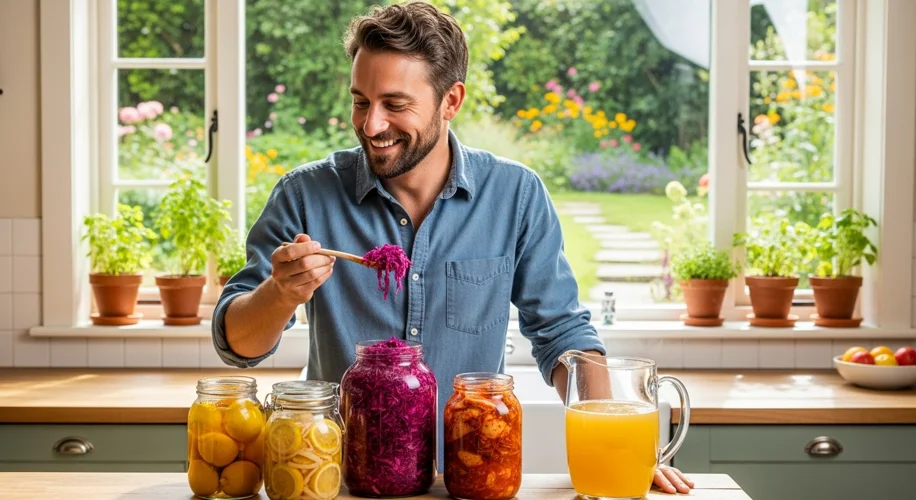Hey everyone, Elias here! You know how much I love getting my hands dirty in the garden, and lately, I’ve been diving deep into something truly fascinating: fermentation.
It feels like every time I turn around, there’s a new food trend, but fermentation isn’t new at all. It’s actually one of the oldest ways humans have preserved food, dating back thousands of years. Think about it – before refrigerators, how did people keep their harvests from going bad? Fermentation was a huge part of the answer.
I’ve always been a bit of a food enthusiast, and when I started thinking about how to make the most of my garden’s bounty, fermentation just clicked. It’s like magic, but it’s actually science! Basically, you’re using helpful microbes (like bacteria and yeast) to break down sugars in food. This process not only preserves the food but also creates incredible new flavors and textures. Plus, it’s great for your gut health!
My first foray into this ancient art was with sauerkraut. I took some beautiful, crisp cabbage from my garden, shredded it, added salt, and packed it into jars. The waiting game began, with just the gentle bubbling of the brine to let me know things were happening. When I finally tasted it – wow! Tangy, crunchy, and bursting with flavor. It was so much better than anything I’d ever bought.
From there, I got adventurous. Kimchi was next. Cabbage, carrots, radishes, and that signature gochugaru (Korean chili flakes) – the smell as it ferments is something else! It’s a bit spicier and more complex than sauerkraut, and it’s fantastic on everything from eggs to grilled cheese.
And then there’s apple cider. While not strictly fermented in the same way as sauerkraut or kimchi (unless you’re making apple cider vinegar!), the natural yeasts on apples start a subtle fermentation process that gives fresh cider its unique character. I’ve been experimenting with making my own, just letting the apple juice sit and develop those complex, slightly fizzy notes. It’s a taste of autumn in a glass.
The beauty of fermentation is how adaptable it is. You can ferment almost any vegetable: cucumbers into pickles, green beans into dilly beans, even carrots and beets. It’s all about salt, time, and the right conditions. It’s a way to connect with my harvest on a deeper level, transforming simple ingredients into something extraordinary and preserving the flavors of the season long after the plants have stopped producing.
It’s also incredibly rewarding. There’s a satisfaction in pulling a jar of perfectly fermented food from the back of the cupboard, knowing you made it yourself from ingredients you grew. It’s a tangible link to the past and a delicious way to eat sustainably in the present. If you’ve got a garden or just love good food, I really encourage you to give fermentation a try. It’s simpler than you might think, and the results are incredibly delicious!

